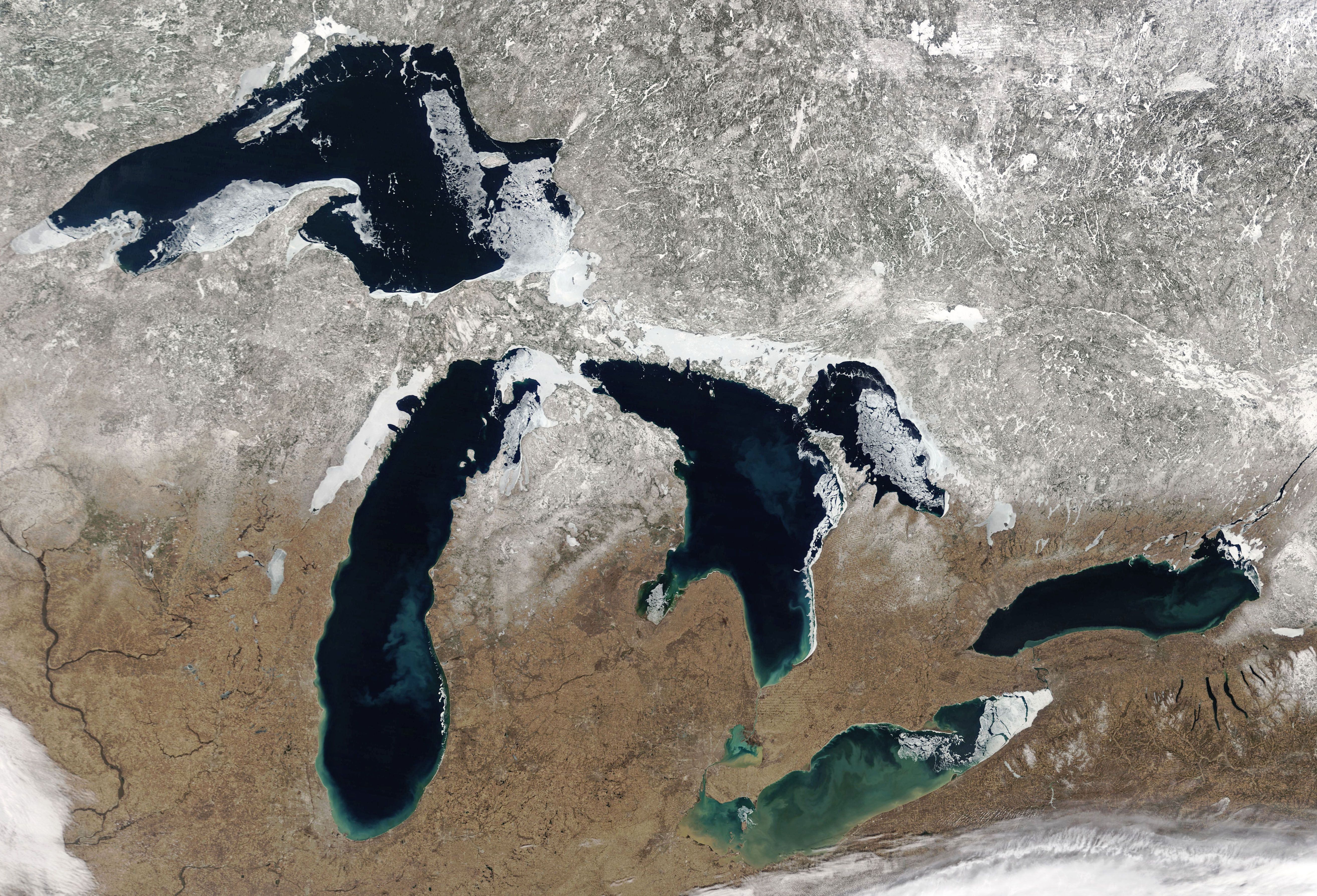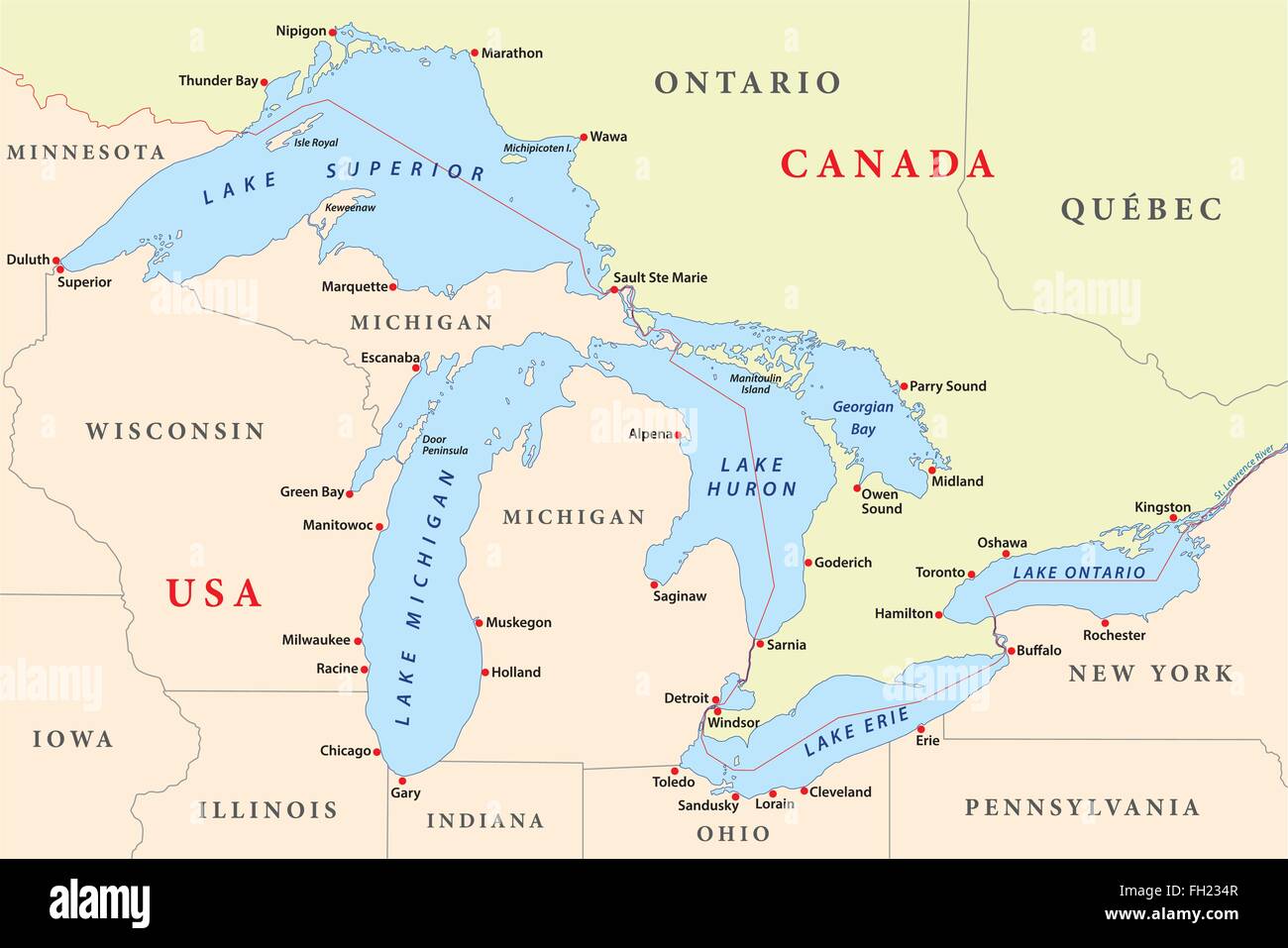Embark on a captivating journey into the heart of one of the Great Lakes NYT, where nature’s wonders converge to create a mesmerizing spectacle. From the vast expanse of Lake Superior to the vibrant shores of Lake Ontario, these majestic bodies of water hold a treasure trove of ecological significance, economic vitality, and historical allure.
Delving deeper, we uncover the unique geological origins of the Great Lakes, unravel the intricate web of biodiversity that thrives within their depths, and explore the profound impact they have had on human civilization throughout history.
The Great Lakes: A Vital Ecosystem
The Great Lakes, the largest freshwater ecosystem on Earth, are a series of interconnected lakes located in North America. They were formed during the last glacial period, when glaciers carved out the land and left behind vast depressions that filled with water.
The Great Lakes are home to a diverse array of plant and animal life, and they provide important economic and recreational benefits to the surrounding region.
Geological Formation
The Great Lakes were formed during the last glacial period, which began about 2.6 million years ago. During this time, glaciers covered much of North America, and their weight caused the land to sink. As the glaciers retreated, they carved out deep depressions in the land, which filled with water and formed the Great Lakes.
If you’re looking for a way to mount your TV in a corner, there are a few things you need to keep in mind. First, you’ll need to make sure that the TV bracket you choose is compatible with your TV.
Second, you’ll need to find a spot in the corner that is both sturdy and level. And finally, you’ll need to make sure that you have the proper tools and materials to complete the installation.
The lakes are located in a region that is known as the Great Lakes Basin, which is a vast area that covers parts of Canada and the United States.
Biodiversity
The Great Lakes are home to a diverse array of plant and animal life. The lakes are home to over 3,500 species of plants and animals, including fish, amphibians, reptiles, birds, and mammals. The Great Lakes are also home to a number of unique ecosystems, such as the Great Lakes coastal wetlands, which are important breeding grounds for many species of fish and birds.
Economic and Recreational Importance
The Great Lakes provide important economic and recreational benefits to the surrounding region. The lakes are a major source of drinking water for millions of people, and they also support a number of industries, such as fishing, shipping, and tourism.
The Great Lakes are also a popular destination for recreation, and they offer a variety of activities, such as swimming, boating, fishing, and camping.
The Role of Lake Superior in the Great Lakes System
Lake Superior, the largest freshwater lake in the world by surface area, plays a pivotal role in the Great Lakes ecosystem. Its immense size and unique characteristics have shaped its ecological significance, history, and economic importance.
Size and Depth
- Lake Superior is the largest of the Great Lakes, covering an area of 82,100 square miles (212,680 square kilometers).
- It is also the deepest of the Great Lakes, with a maximum depth of 1,333 feet (406 meters).
- In comparison, Lake Michigan is the second largest in surface area but has a maximum depth of only 923 feet (281 meters).
Water Chemistry and Temperature
Lake Superior’s water is exceptionally cold and clear. Its surface temperature rarely exceeds 45°F (7°C) in the summer, and its deep waters remain cold year-round.
The lake’s water is also relatively low in nutrients, contributing to its clarity. This clarity allows sunlight to penetrate deeper into the water, supporting a diverse ecosystem.
Shipping and Trade
Lake Superior has a long history of shipping and trade. Its deep waters and large size have made it a vital transportation route for iron ore, grain, and other commodities.
The Port of Duluth-Superior is the largest freshwater port in the world, handling over 40 million tons of cargo annually.
Lake Michigan
Lake Michigan, one of the five Great Lakes, is a diverse and dynamic ecosystem that supports a wide range of plant and animal life. It is the only Great Lake that lies entirely within the United States, with its shores touching Michigan, Wisconsin, Illinois, and Indiana.Lake Michigan’s unique shape and shoreline contribute to its diverse ecosystem.
The lake is shaped like a mitten, with two large lobes separated by the Door Peninsula in Wisconsin. This shape creates a variety of habitats, from shallow bays and wetlands to deep, open waters. The lake’s shoreline is also varied, with sandy beaches, rocky cliffs, and forested areas.Lake Michigan’s water levels fluctuate naturally, primarily due to changes in precipitation and evaporation.
In recent years, the lake’s water levels have been relatively high, but they have also experienced periods of low water levels in the past.
Plant and Animal Life
Lake Michigan is home to a diverse array of plant and animal life. The lake’s waters are home to a variety of fish species, including salmon, trout, bass, and perch. The lake also supports a variety of aquatic plants, including algae, water lilies, and cattails.The shoreline of Lake Michigan is home to a variety of plant and animal life, including forests, wetlands, and beaches.
The forests are home to a variety of tree species, including oak, maple, and pine. The wetlands are home to a variety of plants and animals, including cattails, frogs, and turtles. The beaches are home to a variety of birds, including gulls, terns, and sandpipers.Lake Michigan is a vital ecosystem that provides a variety of benefits to humans and wildlife.
The lake provides drinking water for millions of people, supports a thriving fishing industry, and offers a variety of recreational opportunities.
If you’re looking for an innovative way to mount your TV, consider a tv bracket for corner wall mount. These brackets are designed to fit snugly into the corner of your wall, providing a sturdy and space-saving solution for your entertainment system.
Whether you’re a tech enthusiast like Tony Stark or an adventurous soul like Jack Sparrow, a corner wall mount will enhance your viewing experience and declutter your living space.
Lake Huron: A Lake of Contrasts
Lake Huron, the second largest of the Great Lakes by surface area, is a fascinating body of water with a rich history, diverse ecosystem, and abundant recreational opportunities.
Unique Geographical Features
Lake Huron is characterized by its unique geographical features, including its numerous islands and bays. The largest island in Lake Huron is Manitoulin Island, which is the largest freshwater island in the world. Other notable islands include Mackinac Island, Bois Blanc Island, and Drummond Island.
Lake Huron is also home to several large bays, including Georgian Bay, Saginaw Bay, and Thunder Bay. Georgian Bay is the largest freshwater bay in the world, and it is known for its beautiful scenery and numerous islands.
Historical and Cultural Significance
Lake Huron has been an important waterway for centuries. Native American tribes, including the Ojibwe, Odawa, and Potawatomi, have lived around the lake for thousands of years. The lake was also a major route for European explorers and fur traders in the 17th and 18th centuries.
Today, Lake Huron is a popular destination for tourists and outdoor enthusiasts. The lake offers a variety of recreational opportunities, including swimming, boating, fishing, and camping.
Recreational Opportunities and Tourism Industry, One of the great lakes nyt
Lake Huron is a popular destination for tourists and outdoor enthusiasts. The lake offers a variety of recreational opportunities, including swimming, boating, fishing, and camping.
The tourism industry around Lake Huron is a major economic driver for the region. Many businesses rely on tourism revenue, including hotels, restaurants, and marinas.
Lake Erie: A Lake of Change: One Of The Great Lakes Nyt

Lake Erie, the fourth largest of the Great Lakes, is a shallow and productive ecosystem that has undergone significant changes over the past century. Its unique geological and hydrological features, combined with environmental challenges and restoration efforts, make Lake Erie a compelling case study in the dynamics of freshwater ecosystems.
Geological and Hydrological Features
Lake Erie’s shallow depth, averaging only 62 feet, and its relatively small size make it the warmest of the Great Lakes. Its western basin is dominated by a large, shallow embayment known as Sandusky Bay, while its eastern basin is characterized by deeper waters and a more diverse shoreline.
The lake’s hydrology is influenced by its position at the end of the Great Lakes drainage system, receiving water from Lakes Superior, Michigan, and Huron through the Detroit River. This influx of nutrient-rich water, combined with the lake’s shallow depth, makes Lake Erie highly productive, supporting a diverse array of aquatic life.
Whether you’re a fan of Tony Stark or Jack Sparrow, you’ll find something to enjoy in this New York Times feature comparing the two iconic characters. Both men are brilliant and charismatic, but they also have their flaws. Stark is arrogant and self-centered, while Sparrow is a bit of a rogue.
But ultimately, both men are heroes who have saved the world more than once.
Environmental Challenges
Lake Erie has faced numerous environmental challenges over the years, including pollution, invasive species, and habitat loss. Agricultural runoff, industrial discharges, and sewage treatment plant effluent have contributed to nutrient enrichment, leading to algal blooms and eutrophication. Invasive species, such as the zebra mussel and the round goby, have disrupted the lake’s ecosystem, altering food webs and impacting native species.
Habitat loss due to shoreline development and dredging has further reduced the lake’s biodiversity.
Restoration Efforts
In response to these challenges, significant efforts have been made to restore and protect Lake Erie’s ecosystem. The Great Lakes Water Quality Agreement, signed in 1972, has set limits on nutrient discharges and led to improvements in water quality. Invasive species management programs have been implemented to control the spread of non-native species.
Habitat restoration projects have focused on protecting and restoring wetlands, shorelines, and spawning grounds. These efforts have contributed to the recovery of Lake Erie’s ecosystem, but ongoing monitoring and management are essential to ensure its long-term health.
Lake Ontario

Lake Ontario, the easternmost of the Great Lakes, is a freshwater lake that forms part of the border between the United States and Canada. It is connected to the Atlantic Ocean through the St. Lawrence River, making it a vital waterway for trade and transportation.Lake Ontario has played a significant role in the development of both the United States and Canada.
It was a major battleground during the American Revolutionary War and the War of 1812. In the 19th century, the lake became a major transportation route for goods and people moving between the Midwest and the East Coast.Today, Lake Ontario is home to several major cities, including Toronto, Ontario; Rochester, New York; and Hamilton, Ontario.
The lake’s shores are also home to a variety of industries, including manufacturing, tourism, and agriculture.
Major Cities on Lake Ontario
- Toronto, Ontario
- Rochester, New York
- Hamilton, Ontario
- Kingston, Ontario
- Oshawa, Ontario
- Burlington, Ontario
Industries on Lake Ontario
- Manufacturing
- Tourism
- Agriculture
- Shipping
- Fishing
Outcome Summary
As we conclude our exploration of one of the Great Lakes NYT, we are left with a profound appreciation for the interconnectedness of nature and the enduring legacy of these freshwater giants. Their ecological importance, economic vitality, and historical significance serve as a testament to the vital role they play in shaping our planet and inspiring generations to come.
FAQ Resource
What is the largest of the Great Lakes?
Lake Superior
Which Great Lake is known for its fluctuating water levels?
Lake Michigan
What is the only Great Lake that borders Canada?
Lake Ontario
